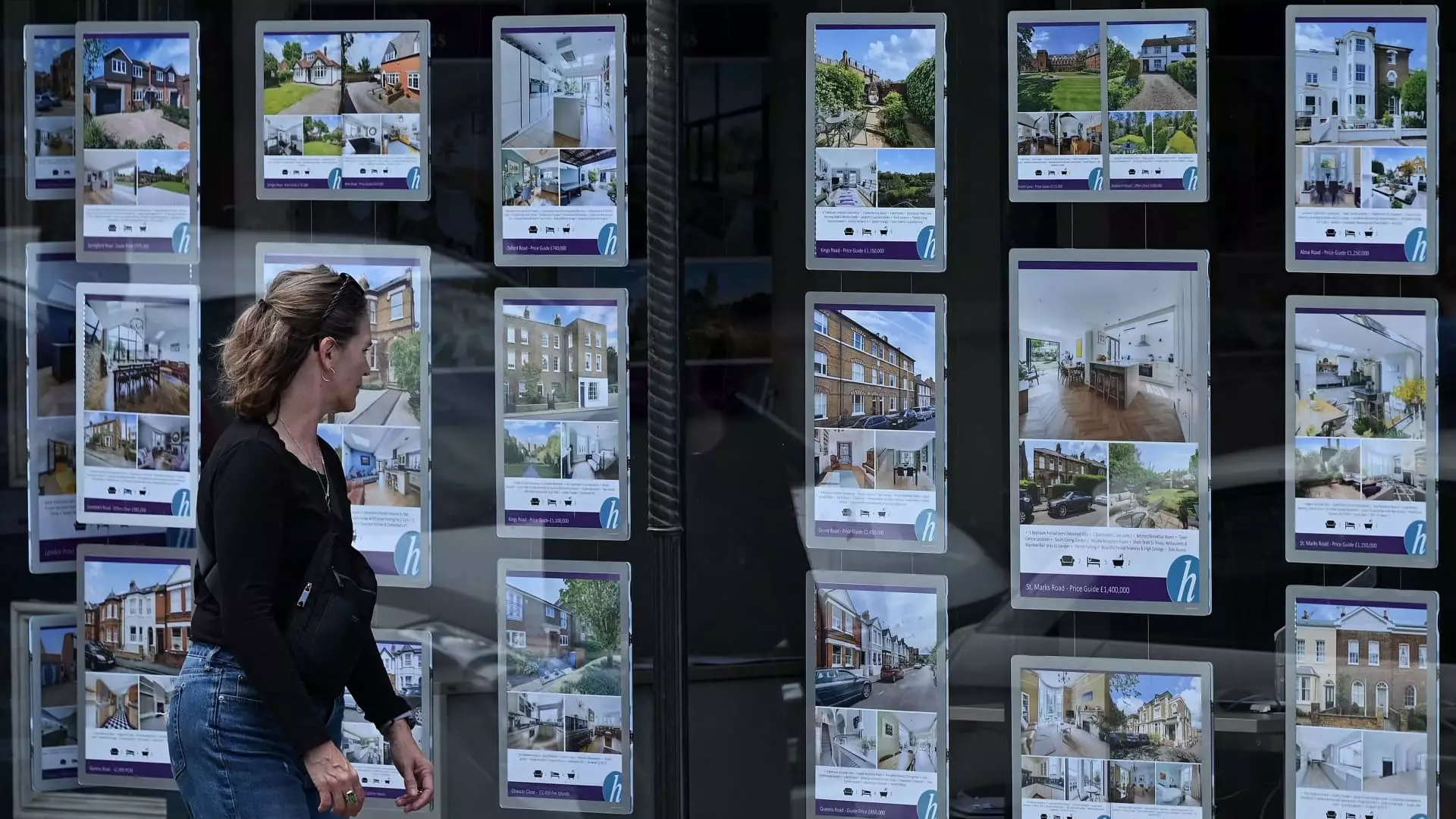The U.K. housing market is showing significant signs of recovery as recent data indicates a notable increase in home sales. For the four weeks leading up to September 22, agreed home sales surged by an impressive 25% year-on-year, marking the highest growth rate since the spring of 2021. This revitalization in the housing market can largely be attributed to falling mortgage rates, which have enticed many prospective buyers who had previously opted to stay on the sidelines due to economic uncertainties and high borrowing costs. Research by property portal Zoopla highlights this behavioral shift, suggesting that households are returning to the market with renewed vigor.
Along with the increase in sales, buyer inquiries have also witnessed a remarkable 26% annual rise. This uptick reflects a growing confidence among consumers, eager to take advantage of current market conditions. Consequently, shares of major U.K. homebuilders such as Taylor Wimpey and Barratt Developments have experienced a 1.4% increase, showcasing optimistic investor sentiment surrounding this housing rally.
A primary catalyst for this surge in housing activity is the decrease in mortgage rates. As of September, the average mortgage rate for a five-year fixed term fell to 4.57%, down from 5.53% the previous year. Some lenders have even reduced rates to as low as 3.7%, significantly below the Bank of England’s key rate of 5%. According to Richard Donnell, Executive Director at Zoopla, these lower rates have not only sparked interest among potential buyers but also revived homeowner confidence, turning the tide for many who had delayed decisions related to moving or upgrading their properties.
In August, mortgage approvals reached their highest level in two years, further illustrating the increased activity in the market. This optimism is likely to be sustained in light of the upcoming Bank of England meeting on November 7, where further discussions around rate cuts could take place. Governor Andrew Bailey hinted at the possibility of “aggressive” rate cuts should inflation data remain favorable, reinforcing the notion that the housing market may continue its upward trajectory.
It is essential to note that house price growth has not been uniform across the U.K. Various regions are experiencing different rates of appreciation, with Northern Ireland leading the pack at a staggering annual increase of 8.6%. Scotland follows closely with a 4.3% growth rate, while the north of England is also outpacing the south. London, however, remains the strongest performer among southern regions, posting a modest 2% price growth.
Despite these positive trends, not all segments of the market are flourishing equally. The post-pandemic “race for space” has left apartment sales lagging behind, as many buyers opt for larger homes in less urban settings. Nationwide’s Chief Economist, Robert Gardner, has pointed out that increased inventory is becoming available as landlords aim to sell their buy-to-let properties ahead of expected tax hikes in the government’s Autumn Budget, set for October 30. This influx of homes may temper overall price growth in the months to come, suggesting a shift towards a buyer’s market.
Complicating matters further are the looming speculations regarding potential tax reforms in the upcoming budget, which could significantly impact property sales and market dynamics. Following the discovery of a £22 billion “black hole” in public finances, Finance Minister Rachel Reeves hinted at the necessity for tax increases. Although income tax and National Insurance have been ruled out, capital gains tax and inheritance tax adjustments remain under consideration, both of which could affect sellers and buyers alike.
Moreover, changes to the U.K.’s non-dom tax status may encourage higher-end property sellers to remain active in the market, as wealthy residents contemplate relocating to lower tax jurisdictions. This potential shift may particularly affect the luxury segment of the market and could lead to volatility in pricing as sellers rush to make decisions before any legislative changes are enacted.
The U.K. housing market is witnessing a renewed sense of optimism with rising home sales and declining mortgage rates. While this resurgence is promising, regional variances and looming tax changes necessitate a cautious outlook. As the market adapts to evolving economic conditions, stakeholders should remain vigilant in observing trends and preparing for shifts that could influence property valuations moving forward. The coming months will be pivotal in determining whether the current momentum can be sustained, particularly in light of the anticipated government announcements and market adjustments.

